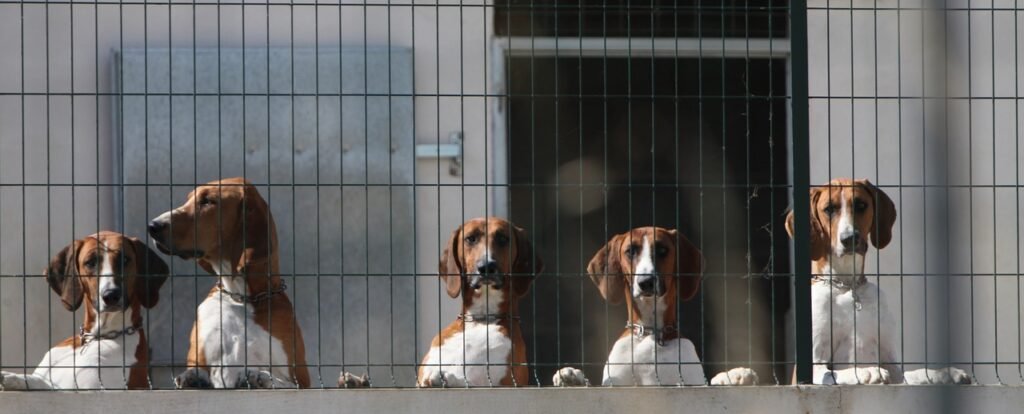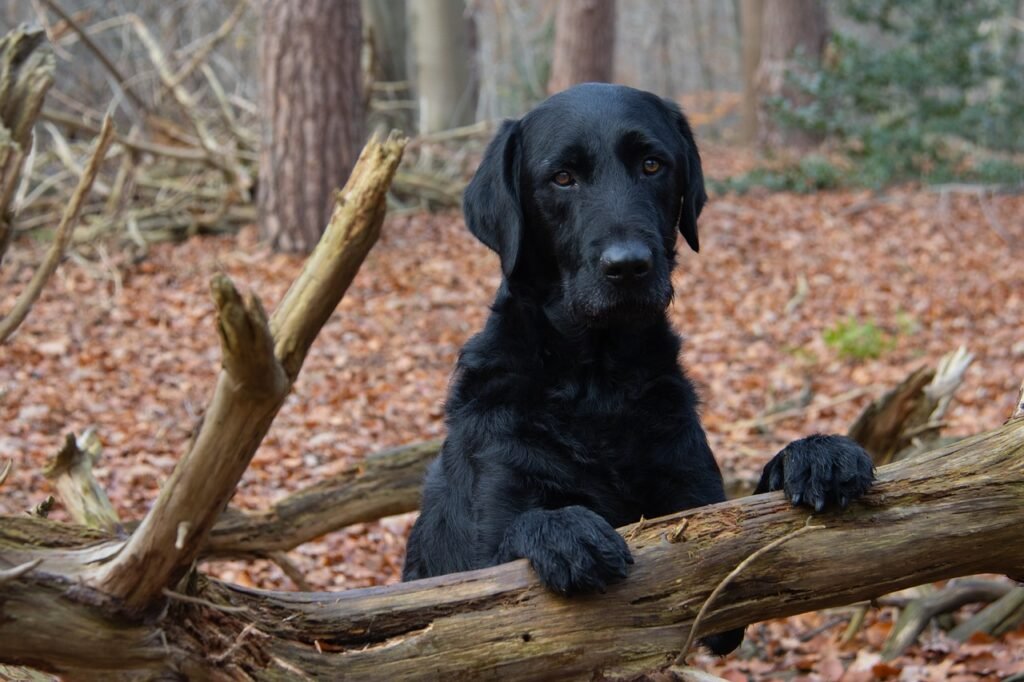Intro
As our aging canine companions age, it’s essential for pet owners to be attuned to their changing needs, including their emotional well-being. One crucial aspect of caring for aging dogs is understanding their body language, especially when it comes to signs of fear and anxiety.
By recognizing these signals, pet owners can address their senior dogs’ emotional distress and provide the necessary support and comfort. In this blog post, we will delve into the importance of understanding canine body language and explore common signs of fear and anxiety in senior dogs.
The Importance of Recognizing Aging Canine Body Language

Unlocking the secrets of canine body language offers a window into our aging dogs’ souls, allowing us to comprehend their unspoken fears and anxieties. It’s a skill that transforms pet ownership into a deeper, more empathetic relationship with our senior companions. Dogs, much like humans, convey their emotions through physical expressions, but interpreting these signals requires keen observation and understanding. The nuanced flick of an ear or the subtlety of a tail tuck can speak volumes about what our furry friends are feeling, especially as they face the vulnerabilities of old age.
Acknowledging the significance of canine body language elevates the care we provide our senior dogs beyond basic needs, fostering a compassionate and responsive environment. This attunement to their non-verbal cues empowers pet owners to preemptively address situations that may provoke fear, anxiety, or stress in their aging pets. Recognizing the early signs of discomfort through body language not only helps in mitigating immediate stressors but also aids in preventing long-term emotional distress, ensuring our senior dogs lead a comfortable and serene life.
Deciphering these silent messages requires a blend of patience and practice. For instance, a dog that is anxious or fearful may exhibit avoidance behaviors, seeking solitude over interaction, or may show more overt signs like cowering and trembling. By being vigilant and responsive to these cues, pet owners can adapt their approach, whether it means removing the source of stress or gently soothing their dog to reassure them of their safety and security. This proactive engagement with our dogs’ emotional states reinforces a bond of trust and understanding, crucial for navigating their senior years with grace.
Furthermore, educating oneself on the diverse aspects of canine body language can uncover more than just signs of fear or anxiety; it also highlights moments of joy and contentment in our dogs’ lives. Celebrating these positive expressions is equally important, providing a balanced perspective on our pets’ emotional health. Thus, mastering the language of our canine companions is not merely about mitigating negatives but also about enhancing the positives, making every moment with our aging dogs richer and more meaningful.
Common Signs of Fear and Anxiety in Senior Dogs

Navigating the complexities of your senior dog’s emotional landscape requires a careful and attentive eye, especially as they enter their golden years. The manifestation of fear and anxiety can be subtle or overt, varying widely from dog to dog. Some may retreat into a shell of solitude, seeking the quiet comfort of hidden corners or underneath furniture. This behavior signifies a desire to escape their anxieties, withdrawing from the world in search of safety.
In contrast, others might respond with more visible distress signals, such as constant trembling or shivering, which serves as a clear indicator of fear. This physical reaction is often accompanied by panting or excessive drooling, signs that their anxious state is affecting their physiological well-being. These behaviors, while distressing, provide key insights into the emotional state of our senior companions, allowing us to address their fears more directly and effectively.
Another common behavior is the avoidance of interaction, not just with unfamiliar faces but sometimes even with their beloved owners. This shift can be particularly heart-wrenching, as it represents a change in the foundational trust and companionship between pet and owner. Recognizing this behavior as a manifestation of deeper anxiety rather than personal rejection is crucial for providing the appropriate support.
Moreover, aging dogs might also exhibit destructive behaviors, a stark departure from their typically calm demeanor. Chewing, digging, or even aggression can be misinterpreted as mere bad habits or defiance. However, these actions often stem from a place of fear and anxiety, serving as coping mechanisms for the emotional turmoil swirling within them.
Understanding these signs and responding with empathy and patience is paramount in aiding our aging dogs through their moments of fear and anxiety. Each dog will express their stress in unique ways, demanding a tailored approach to comfort and reassure them. By staying attuned to these signs, pet owners can forge a path toward tranquility and security for their senior dogs, ensuring their twilight years are as peaceful and comforting as possible.
The Role of Age-Related Health Issues in Behavioral Changes

As our canine friends enter their senior years, their bodies undergo significant changes that can have a profound impact on their behavior and emotional health. Age-related conditions such as arthritis, cognitive dysfunction, and vision or hearing loss can introduce new layers of fear and anxiety into their lives. The discomfort and pain associated with these physical ailments can make previously fearless dogs more apprehensive and sensitive to their surroundings.
Navigating through these health challenges requires a compassionate understanding from pet owners. A once energetic dog slowed down by the stiffness of arthritis might start to exhibit signs of anxiety in situations that require swift movement or agility, such as navigating stairs or jumping off the couch. The onset of cognitive dysfunction can lead to confusion and disorientation, making familiar environments seem strange and intimidating, thus heightening feelings of vulnerability and stress.
It’s not just the physical discomfort that alters behavior; sensory decline plays a significant role too. Loss of vision or hearing can startle a dog, making them more reactive to unexpected touches or sounds. This heightened state of alert can manifest as fearfulness or even aggression, behaviors that are out of character but driven by the anxiety of not being able to fully interpret their environment.
Recognizing the link between these age-related health issues and changes in behavior is the first step towards providing the right support. Pet owners should closely monitor their senior dogs for any signs of distress and work collaboratively with veterinarians to address the underlying health conditions. Effective management of these physical ailments can alleviate some of the emotional distress, making it easier for senior dogs to navigate their world with confidence and ease.
Understanding the intersection of physical health and emotional well-being in senior dogs illuminates the importance of a holistic approach to their care. By addressing both the physical and emotional needs of aging canines, pet owners can help their loyal companions enjoy their golden years with dignity and comfort, reinforcing the bond of love and trust that has grown between them through the years.
Creating a Safe and Comfortable Environment for Your Senior Dog

Crafting a sanctuary that resonates with comfort and safety is paramount for easing the fears and anxieties plaguing our senior dogs. Initiating this process involves the thoughtful placement of their favorite items—beds infused with their scent, toys that bring them joy, and perhaps a piece of your clothing that helps bridge your presence even when you’re away. These familiar elements serve as anchors, reminding them of love and security amid the unfamiliar tides of aging.
Adjustments within the home can significantly mitigate stress triggers for sensitive senior dogs. Consider the layout of their living space—ensuring pathways are clear of obstacles that might challenge aging joints or eyesight, and creating easy access to their most frequented spots. Soft lighting can soothe dogs with vision impairments, just as reducing sudden, loud noises can provide a calmer atmosphere for those with sensitive hearing. It’s about molding their environment to fit their evolving needs, offering them solace in its predictability and serenity.
Incorporating elements that stimulate calmness can also be beneficial. For some dogs, a quiet corner equipped with a soothing sound machine playing gentle, ambient noises may emulate the tranquility of nature, aiding in relaxation. Others might find solace in soft blankets that can be burrowed into, offering a tactile comfort similar to a hug. These adjustments don’t just cater to their physical comfort but also to their emotional well-being, signaling a safe haven from the world’s unpredictability.
It’s also crucial to maintain a keen eye on the environment for any changes that might inadvertently introduce stress. Seasonal decorations, rearranged furniture, or even new household products can unsettle a senior dog. By viewing the world from their perspective, we can preemptively smooth out these disruptions, ensuring their golden years are enveloped in the warmth and safety they’ve always provided us.
The Power of Routine and Familiarity

Embracing the steadiness of a daily routine can significantly diminish the cloud of uncertainty that often looms over our senior dogs. A structured day, with set times for meals, walks, and cuddles, acts as a reassuring beacon for them, signaling when to expect the comforts and joys of life. This predictability fosters a sense of security and stability, crucial elements for dogs navigating the twilight of their years.
Diving into the familiar isn’t just about sticking to a schedule; it’s about nurturing a space where every scent, sound, and sight is a known friend rather than a potential threat. Aging dogs, with their deepening sensitivities, find solace in environments where surprises are few and far between. Familiar faces, paths, and routines are like the soft hum of a well-loved melody, offering comfort and peace amidst the challenges of aging.
Introducing new elements into their life should be done with thoughtful care, ensuring these changes are woven into the fabric of the familiar. When adjustments are necessary, they should be introduced gradually, allowing our senior companions to adapt at their own pace. This careful blending of the new with the known helps maintain a stable environment, minimizing stress and anxiety.
Beyond the tangible aspects of routine and familiarity, there lies an emotional anchor. For our senior dogs, knowing they can rely on us to be there, to feed them, walk them, and love them at the same time each day, deepens the trust and bond we share. It’s a silent promise that despite the inevitable changes age may bring, our commitment to their well-being remains unwavering.
In essence, the power of routine and familiarity for senior dogs is about creating a tapestry of care that intertwines predictability with love, offering a foundation of comfort as they journey through their golden years.
When to Seek Professional Help: Understanding the Limits of Home Care

Navigating the emotional landscape of an aging dog can be a profoundly rewarding yet challenging journey. There comes a point, however, when love, patience, and home adjustments might not be enough to soothe the deep-seated fears and anxieties your senior dog faces. Recognizing this threshold is crucial, as it marks the time to seek the expertise of veterinarians or animal behaviorists. These professionals bring a wealth of knowledge and resources to the table, capable of diagnosing underlying issues that might not be apparent to even the most dedicated pet owners.
Engaging with a veterinarian or an animal behavior specialist offers a fresh perspective on your dog’s emotional well-being. They are equipped to conduct comprehensive assessments, diving deeper into the psychological and physiological aspects that contribute to your dog’s anxiety or stress. Their approach goes beyond the symptoms, seeking to uncover and address the root causes of distress, whether they stem from cognitive changes, sensory impairments, or physical discomfort.
The decision to pursue professional assistance is not an admission of failure but an act of profound care and responsibility. It demonstrates an understanding that the complexities of canine fear and anxiety often require more than what home care can provide. Specialists can tailor intervention strategies, which may include behavioral therapy, environmental modifications, or medical treatments, offering a customized plan that aligns with your dog’s specific needs.
Admitting the need for professional help is a step forward in ensuring your aging companion’s quality of life. It’s about giving them access to all available resources to navigate their senior years with as much peace and comfort as possible. This proactive measure not only benefits your furry friend but also enriches your journey together, reinforcing the bond you share through a commitment to their overall well-being.
Holistic Approaches to Managing Anxiety and Stress in Senior Dogs

Exploring holistic avenues for alleviating stress and anxiety in our senior dogs opens up a realm of gentle yet effective strategies that can complement traditional veterinary care. Aromatherapy, for instance, utilizes the soothing properties of essential oils to create a serene atmosphere for our canine companions. Lavender and chamomile, known for their calming effects, can be diffused in your dog’s resting area to help ease their nerves. This method, while subtle, can significantly impact their overall sense of peace.
Diving deeper into the tactile world, massage therapy emerges as a powerful tool in our holistic toolkit. Gentle, reassuring touches not only strengthen the emotional bond between pet and owner but also stimulate the release of endorphins in our dogs’ brains. This “feel-good” hormone plays a critical role in reducing feelings of stress and anxiety. Incorporating regular massage sessions into your senior dog’s routine can offer them immense relief and comfort, addressing both physical and emotional tensions.
The auditory environment we create for our aging pets can also influence their emotional state. Calming music or the soft hum of nature sounds can replicate the tranquility of a serene environment, enveloping our dogs in a cocoon of comfort. Such auditory cues signal to our pets that they are in a safe space, allowing them to relax more fully.
Incorporating natural supplements or pheromone diffusers presents another layer of support, potentially easing the anxious minds of our senior companions. These alternatives, when selected with veterinary guidance, can blend seamlessly into a holistic care plan designed to soothe and comfort.
Each of these approaches underscores the importance of a multifaceted strategy when addressing anxiety and stress in senior dogs. By weaving together these holistic practices, we can offer our beloved pets a tapestry of care that nurtures their well-being from every angle.
The Importance of Patience and Empathy in Caring for Anxious Senior Dogs

Embracing the journey of caring for an anxious senior dog demands an extraordinary measure of patience and empathy. It is about walking alongside them, offering a steady hand of reassurance amidst their uncertainties. A compassionate approach is key, allowing us to delve into their world and understand the roots of their anxiety. By fostering an environment of trust and security, we pave the way for meaningful connections that transcend the challenges of aging.
Patience becomes our most cherished tool, as it equips us to navigate their moments of distress with grace. It’s not just about waiting out a storm of fear but actively demonstrating that we are here, unwavering in our support, regardless of how long it takes for them to find peace. Empathy, on the other hand, invites us into the heart of their experience, encouraging a gentle hand and a soft word when they seem most distant.
Together, patience and empathy create a sanctuary for our aging companions, a place where fear and anxiety are met with love and understanding. This compassionate care ensures our senior dogs know they are not alone, enveloping them in the comfort and security they deserve in their golden years.
